10 Post-Order Survey Questions to Boost Your Ecommerce Conversions
Timely post-order surveys can help you capture valuable feedback, enhance customer satisfaction, and drive repeat purchases.
Your customers just completed a purchase. They're feeling good about their decision, and their experience is fresh in their minds. This is the perfect moment to collect feedback that can transform your ecommerce business.
Post-order surveys capture insights when customers are most engaged and honest about their shopping experience. The feedback reveals exactly what's working in your sales funnel and what needs improvement. Here's how to ask the right questions to turn customer responses into actionable improvements.
Why timing beats everything
Most ecommerce businesses wait too long to ask for feedback. By the time customers receive an email survey weeks later, they've forgotten the details of their shopping experience. Post-order surveys solve this problem by capturing thoughts immediately after purchase.
The timing creates several advantages. Customers remember specific pain points like confusing navigation or unclear product descriptions. They can pinpoint exactly where they hesitated during checkout. Plus, they're more likely to respond because they just invested time and money in your store.
The key insight: Fresh experiences generate honest, detailed feedback that helps product owners make targeted improvements.
Perfect timing wins
When customers click "Complete Order," they expect confirmation details, not a lengthy questionnaire. The best approach is a short, optional survey that appears after the order confirmation page loads. This timing feels natural and doesn't interrupt the purchase flow.
Keep the survey visible but unobtrusive. A slide-in widget or embedded form works better than a popup that blocks content. Let customers choose whether to participate, and clearly state how long the survey takes.
For mobile shoppers, make sure questions are easy to answer on small screens. Single-tap rating scales work better than text boxes that require typing.
10 questions that reveal everything
1. How easy was it to find what you were looking for?
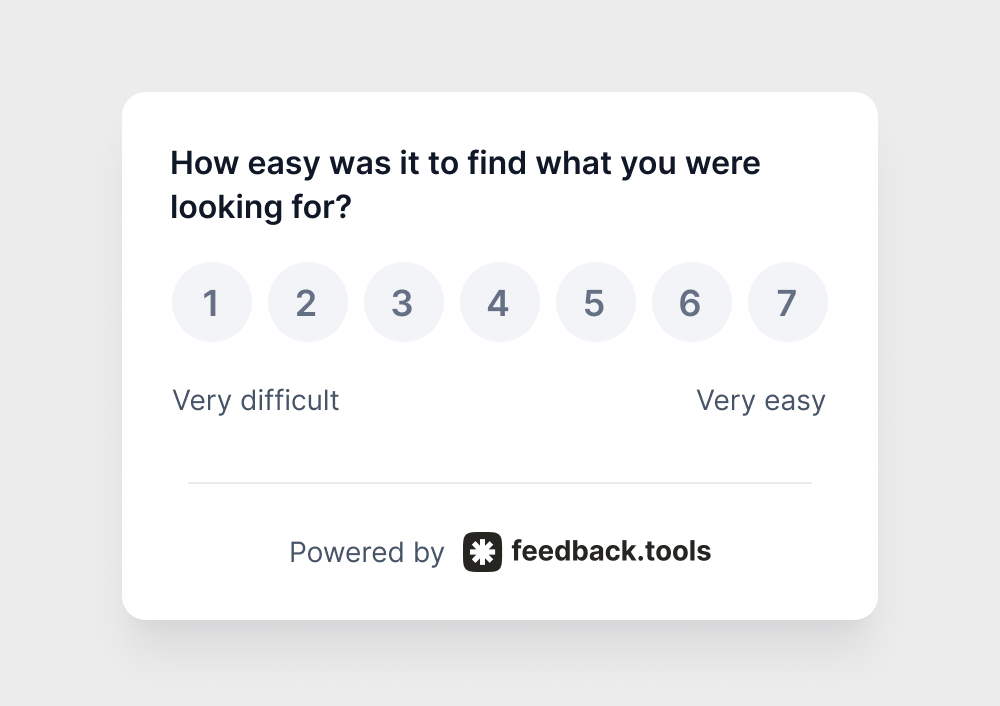
This straightforward question reveals navigation problems that cost sales. When customers report difficulty finding products, businesses know to fix search functions or reorganize categories. This type of effort measurement aligns with Customer Effort Score (CES) principles, focusing on how much work customers had to do.
Why it works: Identifies exactly where users get lost on your site.
2. How satisfied are you with your purchase?

Basic satisfaction measurement helps predict returns and repeat purchases. Dissatisfied customers often explain specific product issues in follow-up comments. This question captures Customer Satisfaction Score (CSAT) data, one of the most reliable predictors of customer loyalty.
Why it works: Links product quality directly to customer sentiment and future sales.
3. How would you rate our checkout process?
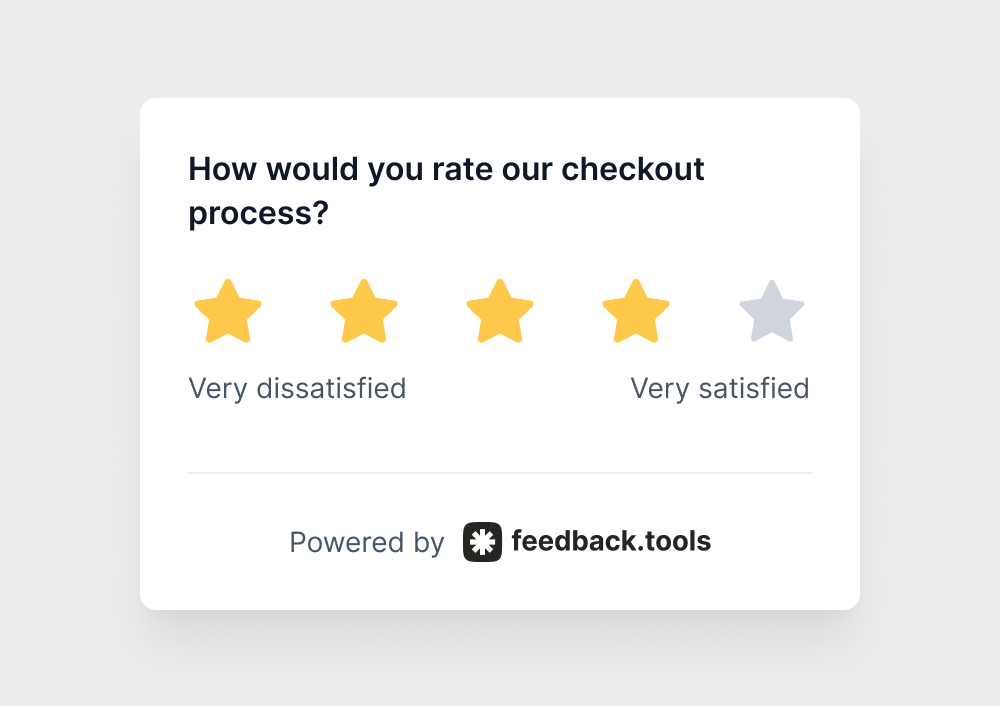
Checkout problems cause 70% of cart abandonment. This simple rating question shows whether your payment flow helps or hurts conversions.
Why it works: Checkout improvements boost revenue immediately.
4. Did our product page have enough information for your decision?
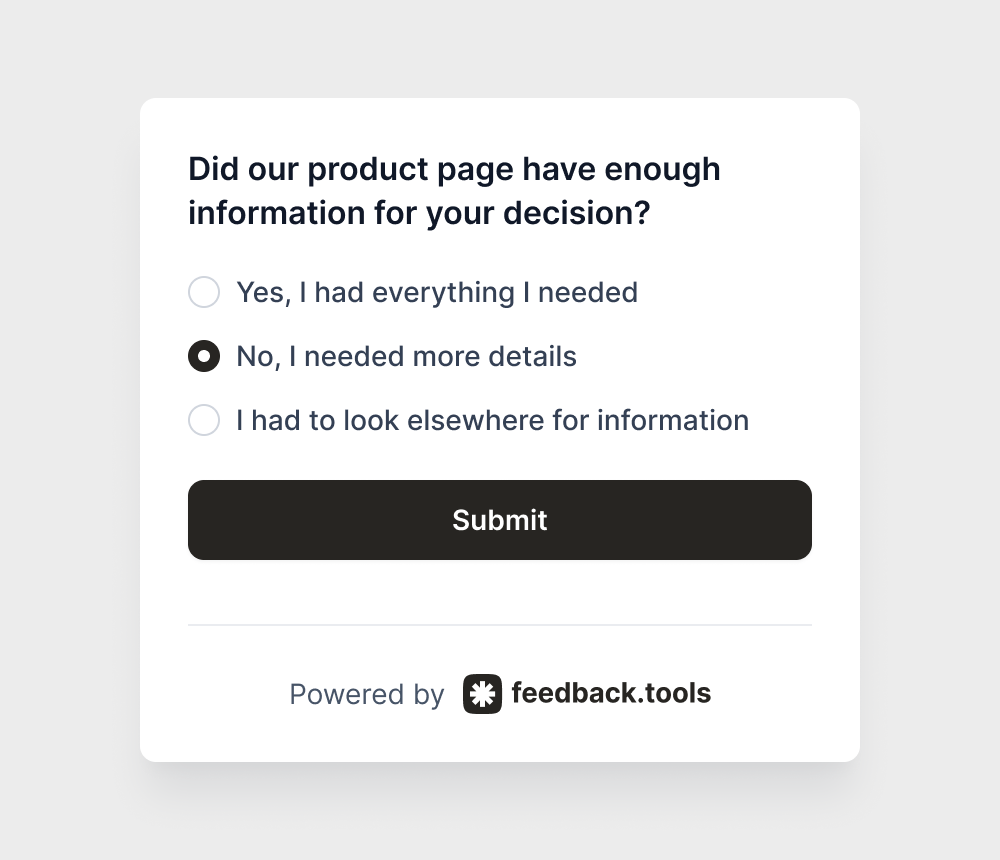
Product pages must answer every customer question before purchase. Missing details increase returns and decrease confidence.
Why it works: Shows exactly what information customers need to buy confidently.
5. Why did you choose us over other stores?
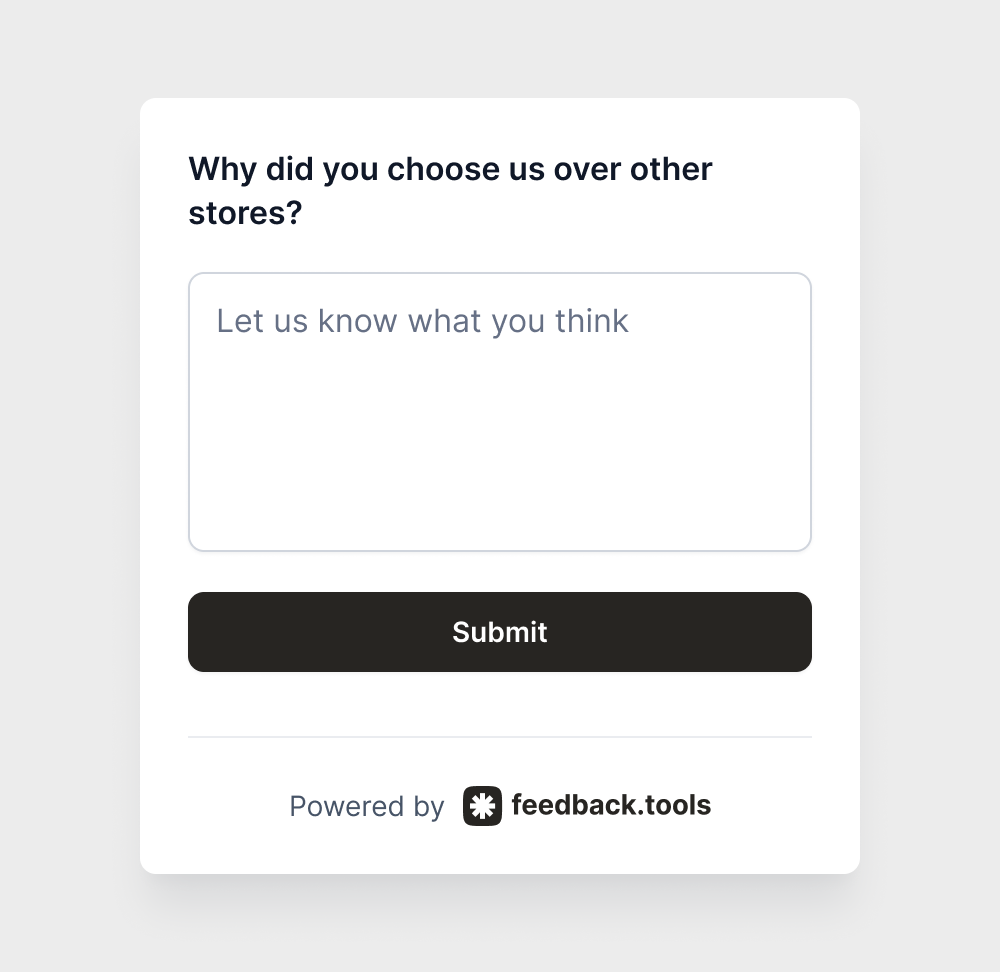
Customers reveal your true competitive advantages. Common answers include better prices, faster shipping, product selection, or customer reviews.
Why it works: Helps you understand what actually matters to buyers.
6. How did you find our store?
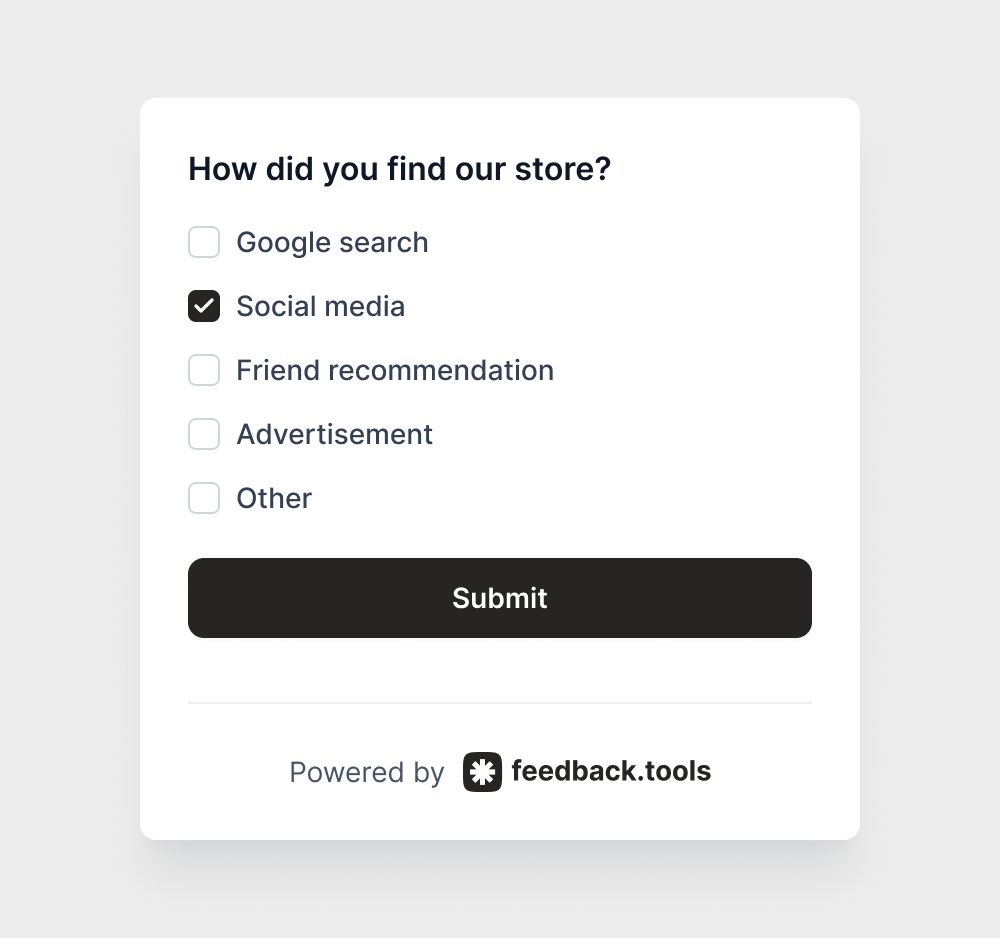
Marketing attribution data misses the complete customer journey. Direct feedback shows which channels bring real buyers.
Why it works: Guides marketing spend to channels that generate actual sales.
7. What almost made you leave without buying?
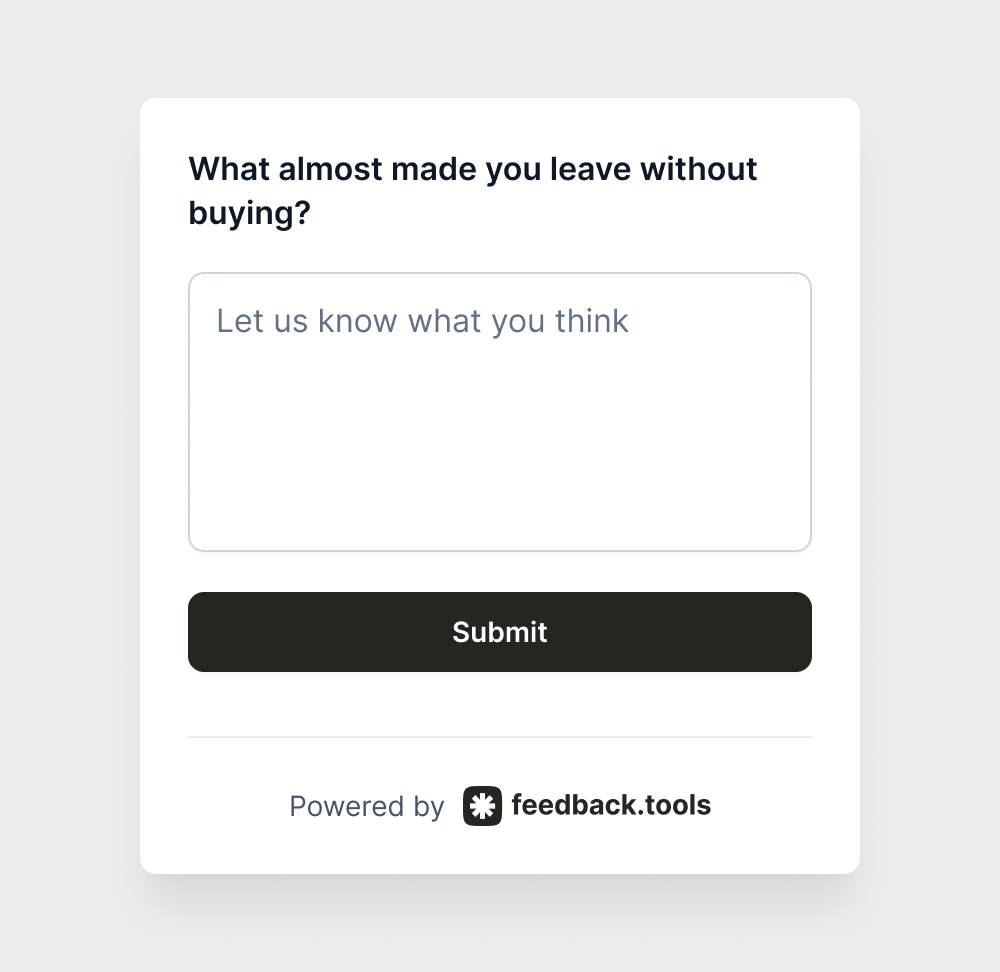
Even successful purchases often include hesitation moments. Customers mention concerns like shipping costs, security worries, or confusing policies.
Why it works: Reveals barriers that stop other visitors from converting.
8. How likely are you to shop here again?

Repeat customers generate more profit than new acquisitions. This question predicts future revenue from each customer segment.
Why it works: Measures loyalty and identifies retention opportunities.
9. Would you recommend us to friends?
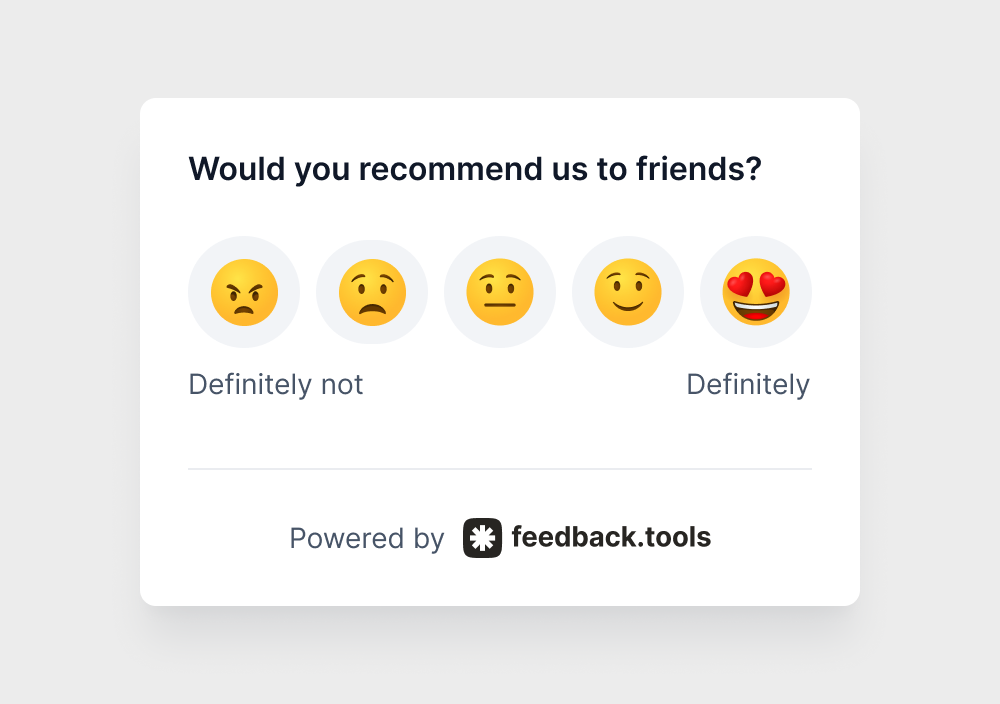
Word-of-mouth drives organic growth. Customers who wouldn't recommend your store highlight problems worth fixing immediately. This question measures Net Promoter Score (NPS), a key indicator of customer loyalty and business growth potential.
Why it works: Predicts viral growth potential and spots reputation risks.
10. What could we improve for next time?
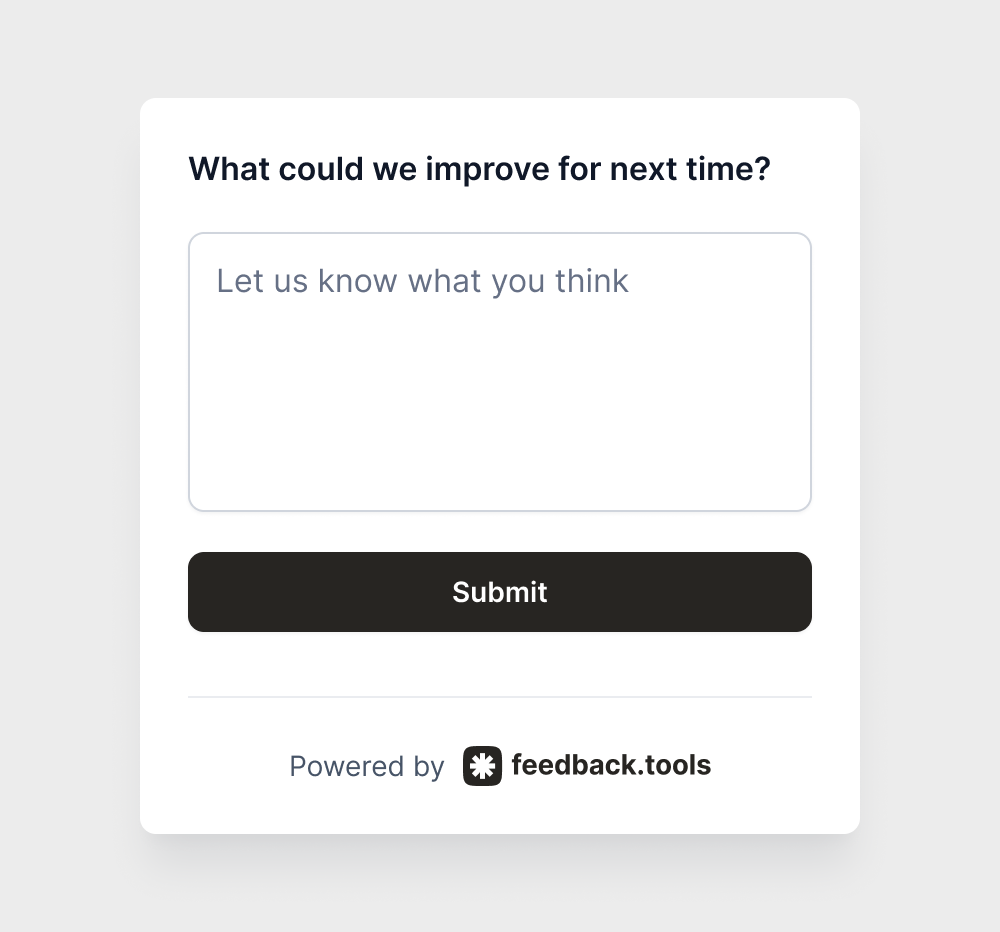
Forward-looking feedback generates specific improvement ideas. Customers suggest features like wishlist functionality, mobile improvements, or additional payment options.
Why it works: Creates development priorities based on real customer needs.
From feedback to fast wins
Collecting survey responses is just the beginning. The real value comes from analyzing patterns and implementing changes quickly.
AI-powered feedback analysis automatically groups similar responses, so teams can spot trends without manually reading hundreds of comments. For instance, if 40% of customers mention slow page loading, that becomes an immediate priority.
This is exactly what feedback.tools does. The platform shows trending insights and highlights critical patterns in an easy-to-scan dashboard. Teams see what matters most without getting lost in individual responses. Sign up to set up your first survey and start turning feedback into focused improvements.
Start with quick wins that require minimal development time. Fixing confusing button text or adding missing product information can improve conversion rates within days.
Track impact over time: Run the same survey questions monthly to measure whether changes actually improve customer satisfaction scores.
Boost response rates
Keep surveys short and focused. Five to seven questions generate better response rates than lengthy questionnaires. Customers just completed a purchase and want to move on with their day.
Make participation feel valuable, not burdensome. Explain how feedback helps improve the shopping experience for everyone. Consider offering small incentives like discount codes for future purchases.
Test survey questions with real customers before launching. What seems clear to internal teams might confuse actual users.
Response rate benchmark: Well-designed post-order surveys typically achieve 15-25% response rates, much higher than email surveys sent weeks later.
Success beyond response rates
Response rates matter, but actionable insights matter more. Track how many improvement opportunities each survey round generates. Successful surveys should produce clear next steps for product teams.
Monitor changes in key metrics after implementing feedback-driven improvements. Better checkout processes should reduce abandonment rates. Clearer product pages should decrease return rates.
The ultimate measure: Customer satisfaction scores should improve over time as teams address common pain points identified through surveys.
Mistakes that kill insights
Asking too many questions at once overwhelms customers and reduces completion rates. Prioritize the most important insights and rotate questions over time.
Generic questions produce generic answers. Instead of "How was your experience?" ask specific questions about navigation, product information, or checkout steps.
Ignoring negative feedback wastes the most valuable insights. Customers who experienced problems often provide the clearest direction for improvements.
Remember: The goal isn't perfect survey scores. It's actionable feedback that helps teams make meaningful improvements.
Start collecting insights today
Use feedback.tools to set up your post-order surveys in minutes. The platform handles the technical integration so you can focus on collecting insights, while AI response processing automatically summarizes feedback patterns and reveals big-picture insights about what customers really think. No more manually reading hundreds of responses to spot trends.
Post-order surveys transform one-time transactions into ongoing conversations with customers. The insights help businesses build better shopping experiences that drive repeat purchases and positive recommendations. Start asking the right questions, and let customer feedback guide your ecommerce improvements.
